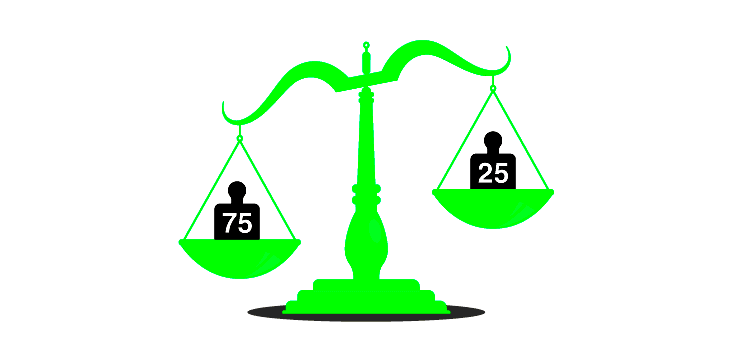What is measurement? This seemingly simple inquiry invites a comprehensive exploration into a concept that is fundamental to both scientific inquiry and everyday life. To understand measurement is not merely to grasp its definition, but also to explore its myriad forms, applications, and the philosophical underpinnings that govern our interpretations of scale and dimension. Thus, one might ponder: is measurement merely a method of quantifying reality, or does it possess deeper implications about our understanding of the universe?
In its essence, measurement can be defined as the process of assigning a numerical value to a physical quantity, thereby allowing for an objective comparison of attributes such as length, mass, temperature, and time. This act of quantification utilizes defined units of measure, which serve as standards, facilitating the communication of information across diverse fields of study and practical applications.
The history of measurement is as extensive as it is fascinating. Ancient civilizations employed rudimentary methods of measurement, often based on human anatomy—an inch was roughly the length of a thumb, while the foot reflected the average length of a person’s foot. However, as societies evolved and the complexities of commerce, science, and navigation grew, so too did the need for more standardized and precise units of measurement. The development of the metric system in the late 18th century marked a significant transformation, pioneering a universal system based on multiples of ten that transcended regional and cultural divisions.
Various types of measurement can be categorized into two primary domains: direct and indirect measurement. Direct measurement entails the straightforward comparison of a property to a defined standard. For instance, using a ruler denotes a direct measurement of length by juxtaposing the object against the scale marked on the ruler. In contrast, indirect measurement involves deducing unknown values through the application of known relationships. For example, determining the height of a building may require measuring its shadow and applying principles of similar triangles, rather than a direct assessment.
Furthermore, measurement is deeply intertwined with unit systems, which act as the language of measurement. The International System of Units (SI) is the most widely used, encompassing a range of base units—such as meter (for length), kilogram (for mass), second (for time), and kelvin (for temperature). Each unit serves not only as a means of quantifying physical reality but also as a framework that influences scientific thought and methodology.
Within the confines of measurement, accuracy and precision emerge as pivotal concepts. Accuracy refers to the closeness of a measured value to the true or accepted value, while precision indicates the consistency of repeat measurements. A crucial aspect of any scientific endeavor is ensuring that measurements are both accurate and precise, as this underpins the validity of experimental results and theoretical conclusions. However, one may pose the question: how do human error and instrument limitation affect the integrity of our measurements?
Instrument development also plays an indispensable role in the evolution of measurement practices. From the archaic hand-held scale to state-of-the-art laser measuring devices, the accuracy and efficiency of measurements have improved tremendously. Modern instruments can detect minuscule changes in variables, allowing for unprecedented exploration in fields such as quantum physics and nanotechnology. Yet, this dependence on technological advancement invites scrutiny. Are we becoming too reliant on instruments, potentially undermining our innate capacity for observation and interpretation?
In the realm of measurement, the challenge of uncertainty is omnipresent. No measurement is devoid of error; all measurements can be affected by systematic biases and random fluctuations. Understanding the sources of uncertainty—be it due to environmental conditions, instrument calibration, or human factors—is critical to any measurement process, necessitating a robust approach to statistical analysis. Through sophisticated techniques, researchers are able to quantify uncertainty, conveying the reliability of their results with an accompanying confidence interval.
A quintessential aspect of measurement is its application within the scientific method, an iterative process through which knowledge is constructed. Hypothesis formulation, experimentation, and data collection hinge on precise measurements that enable scientists to draw conclusions and infer relationships. This empirical foundation is crucial in validating theories and fostering innovation across scientific disciplines. Within this context, one might consider: does a paradigm shift occur when fundamental measurements are redefined or questioned, thereby altering the fabric of scientific understanding?
Finally, the philosophical ramifications of measurement cannot be overlooked. As societies increasingly rely on quantitative evaluation, concerns about reductionism arise. While measurement facilitates clarity and objectivity, it may inadvertently diminish the qualitative aspects of human experience that resist quantification. This dichotomy invites contemplation on the limits of measurement: how do we adequately capture the intricacies of life through mere numbers?
In conclusion, measurement is a multifaceted concept that serves as a foundation for countless fields, from the humanities to the hard sciences. As we navigate through the complexities of this discipline, it is imperative to engage critically with the principles, methodologies, and implications of measurement. The journey of understanding measurement involves recognizing both its power and its limitations, encouraging a profound appreciation for the data and devices that shape our empirical world. Ultimately, measurement transcends mere quantification, challenging us to reflect on our relationship with the universe and the means we employ to define it.










